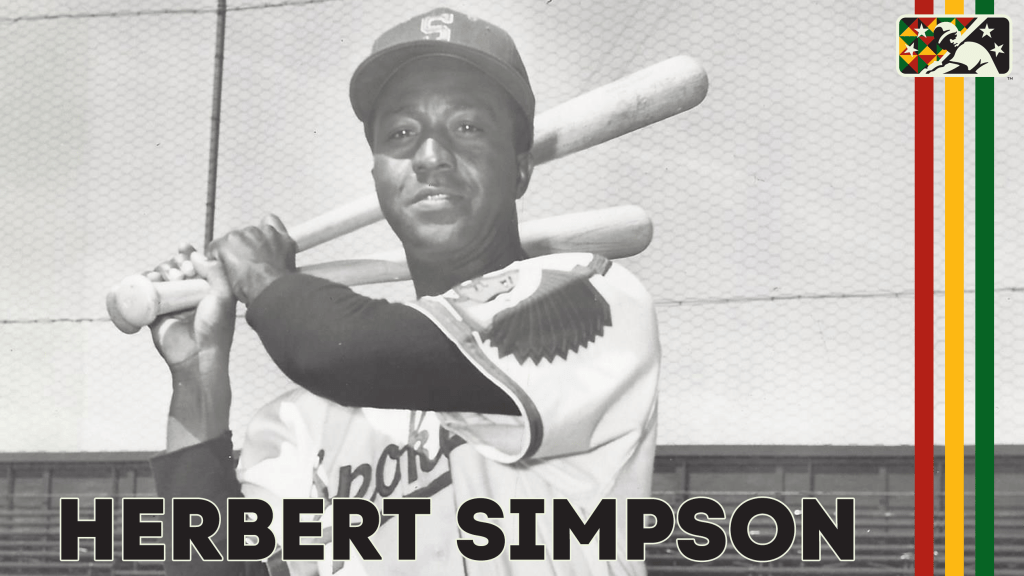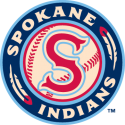
 SPOKANE, Wash. – The Negro Leagues were founded by baseball luminary Rube Foster in 1920 and ran until the 1960s. After struggling through the Great Depression, the Negro Leagues reached their zenith in the late 1930s and early 1940s with legendary players like Cool Papa Bell, Josh Gibson, and Satchel Paige thrilling fans across the country. Finally in 1947, Jackie Robinson officially integrated the sport with the Brooklyn Dodgers and opened the door for other black players to join affiliated baseball, including six that spent time with the Spokane Indians.
SPOKANE, Wash. – The Negro Leagues were founded by baseball luminary Rube Foster in 1920 and ran until the 1960s. After struggling through the Great Depression, the Negro Leagues reached their zenith in the late 1930s and early 1940s with legendary players like Cool Papa Bell, Josh Gibson, and Satchel Paige thrilling fans across the country. Finally in 1947, Jackie Robinson officially integrated the sport with the Brooklyn Dodgers and opened the door for other black players to join affiliated baseball, including six that spent time with the Spokane Indians.
Choo Choo Coleman: Clarence “Choo Choo” Coleman earned the nickname as a child for his fleet-footedness that was likened to that of a speeding train. A tremendous high school athlete, Coleman signed with the Florida State League’s Orlando C.B.’s following his graduation but received limited playing time and left the team the following year to join the Negro Leagues’ Indianapolis Clowns on a barnstorming tour of the country. He returned home to play for the Orlando Dodgers in 1959 and reached the big leagues two years later with Philadelphia after being selected by the Phillies in the Rule 5 draft. Coleman struggled with the Phillies in a brief trial and returned to Triple-A with the Spokane Indians where he produced career-highs in nearly every offensive category (.288, 13 HR, 45 RBI, .868 OPS). He was on the move again the following season after being selected by the New York Mets in the expansion draft and performed admirably for a 120-loss squad (.250, 6 HR, 17 RBI in 55 games). Coleman spent parts of two more seasons with the Mets before retiring from organized baseball following the 1969 season.
Nap Gulley: A member of the Negro League Wall of Fame, Nap Gulley was a talented pitcher that also played in the outfield for the Kansas City Monarchs, Chicago American Giants, Birmingham Black Barons, and Cleveland Buckeyes. He won the Negro League World Series with Cleveland in 1945 and threw a no-hitter against a team of combined major and minor league all-stars the following season. Nap joined the Spokane Indians, who were part of the Class B Northwest League at the time, at the age of 30 in 1955 and had a terrific season, posting a .361 average with 18 home runs in 127 games. Gulley played his last season of organized baseball the following season with the Salinas Packers of the California League.
David Hoskins: A top Negro League pitcher and dangerous hitter at the plate, Hoskins teamed up with Josh Gibson, Cool Papa Bell, and Buck Leonard to form one of baseball’s most fearsome lineups for the Homestead Grays. Hoskins’ talent drew the attention of MLB teams and he earned a tryout for the Red Sox and Braves along with Jackie Robinson and Sam Jethroe in 1945 (Hoskins was unfortunately unable to attend due to injury). He spent two more years in the Negro Leagues before becoming the first black player in the Class-A Central League with the Grand Rapids Jets in 1949, dealing with racial taunts from the stands and fastballs aimed at his head from opposing pitchers. Despite the adversity, Hoskins hit .393 and showed that he was more than capable of competing against white players. After returning to the Negro Leagues for a season with the Louisville Buckeyes, Hoskins signed with the Dallas Eagles and became the first black player in the Texas League in 1952. He was once again the subject of taunts and death threats but it didn’t affect his performance on the field, where he went 22-10 with a 2.12 ERA. Hoskins reached the majors in 1953 with the Cleveland Indians and held his own with a 9-3 record and 3.99 ERA. The highlight of that season came on August 21 when Hoskins matched up against Satchel Paige–the first time two African-American pitchers faced off in an MLB game. Despite his strong showing, Hoskins made just 14 appearances for the Indians the next season in what would be his final year in the big leagues. Hoskins bounced around the minor leagues after that, landing with the Spokane Indians in 1959 where he went 2-2 with a 2.47 ERA in eight games. He would pitch one more season in the minors before retiring to his farm in Michigan.
Don Newcombe: Newcombe spent two years with the Negro League’s Newark Eagles before embarking on an historic MLB career with the Dodgers, Reds, and Indians. The towering right-hander was named Rookie of the Year for the Brooklyn Dodgers in 1949 after finishing 17-8 with a 3.17 ERA and league-leading five shutouts, also becoming the first black pitcher to start a World Series game that same year. He earned All-Star nods the next two seasons (leading the league in strikeouts in 1951) before serving in the Korean War from 1952-53. He struggled in his return to Brooklyn the following season but rebounded with 20 wins and a World Series title in 1955. Newcombe had a season for the ages in 1956, posting a 0.989 WHIP and winning 27 games to earn league MVP and baseball’s first-ever Cy Young Award (which was awarded to only one pitcher in all of baseball at the time). “Newk” spent two more seasons with the Dodgers before finishing out his big league career with the Reds (1958-60) and Indians (1960). He signed with the Dodgers and attempted a big league comeback with the Spokane Indians in 1961 (where he was teammates with fellow Negro League alum Curt Roberts) but struggled to a 4.96 ERA over 25 games. Newcombe, always a good hitter for a pitcher, wrapped up his playing career as a first baseman/outfielder alongside Larry Doby for Japan’s Chunichi Dragons in 1962.
Curt Roberts: A slick-fielding second baseman and shortstop, Roberts opened his career with a Kansas City Monarchs team that featured Negro League luminaries Elston Howard, Buck O’Neil, and Satchel Paige. He played for the Monarchs from 1947-50 before spending the next three seasons with the Western League’s Denver Bears after signing with the Boston Braves. Roberts reached the majors with Pittsburgh in 1954 (Denver became a Pittsburgh affiliate in 1952), becoming the first black player to suit up for the Pirates. He spent three seasons in the Steel City and his Spanish fluency is credited with helping a young Roberto Clemente adjust to life in the big leagues. Roberts struggled to hit with the Pirates and never returned to the majors after 1956, spending the next seven seasons in the minors including 1960-61 with Spokane; hitting .290 and .307 while continuing to provide solid defense up the middle. He would spend two seasons in the minor leagues before retiring in 1963.
Herbert Simpson: An important part of minor league baseball’s integration on the West Coast, Simpson started his career with the Homestead Grays before being drafted for WWII. After serving for four years in Germany, Simpson returned to play for the Seattle Steelheads, Harlem Globetrotters, and Chicago American Giants before becoming the first black player in the Western International League with the Spokane Indians in 1952. The Indians went 91-64 that season with Simpson hitting .282 at the plate while spending time at first base and in the outfield. Simpson joined the Albuquerque Dukes the followng season and became the first black player in the West Texas-New Mexico League. He starred with the Dukes for three seasons, hitting .344 in 1952 and .372 in 1953, before retiring from the sport in 1954.
About the Spokane Indians
The Spokane Indians are the High-A affiliate of the Colorado Rockies located in Spokane, Washington, and were named the 2021 MiLB Organization of the Year. Avista Stadium is home to the $5 Kids Bench Seat courtesy of MultiCare. Parking at all Spokane Indians games is FREE. The Spokane Indians office and team store hours are Monday through Friday, 9:00 AM – 5:00 PM.
